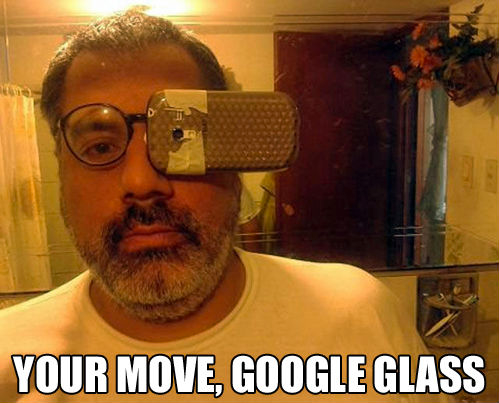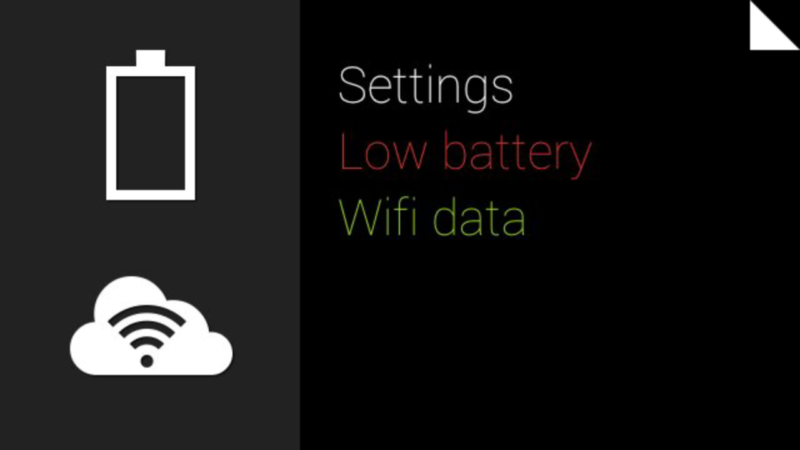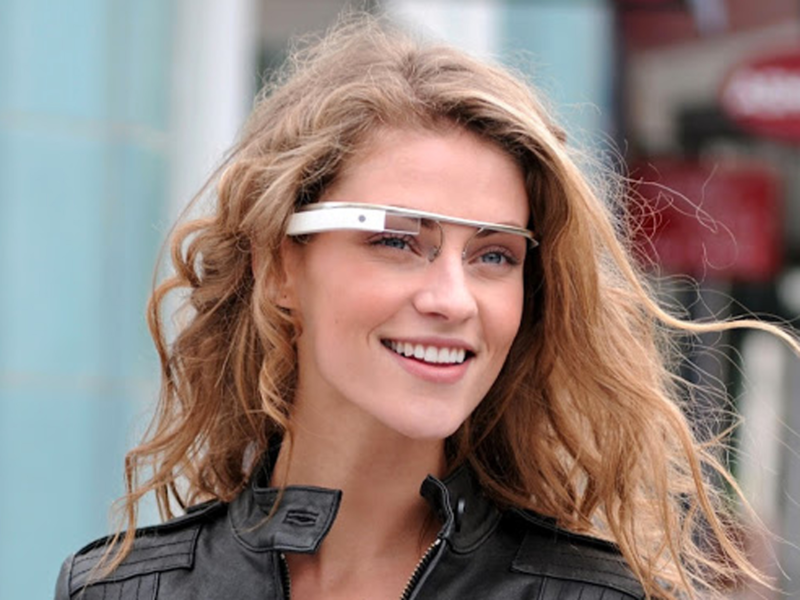Google Glass: Thank You For Exploring With Us
The Google Glass Explorer Program has officially ended -- so what went wrong? Columnist Daniel Cristo explores.

Is Glass Really Dead?
“Thank you for exploring with us.” That was the subject of an email all Google Glass explorers received a few weeks ago letting us know that the Glass Explorer program is shutting down, and Glass in its current form is dead.

But is Google Glass truly dead? In short, no. Glass itself is transitioning from a Google[x] labs project to a standalone unit inside the company under the leadership of former Apple executive and Nest founder, Tony Fadell.
However, the current “Explorer Edition” of Glass — and the program designed to solicit feedback and input from early users — is shutting down, and rightfully so. It ran its intended course of feedback solicitation and product marketing.
Now that we know that the current version of Glass won’t be hitting a full production run for consumers (something I predicted last year), there really isn’t a need for the Explorer Program to continue.
What Went Wrong?
Everything about this project seemed promising from the start.
An entirely new category poised to replace smartphones was up for grabs. Google had a captive community of developers eager to jump on the next big thing. They went with an exclusive invite-only rollout at a premium price point to create scarcity and promote prestige.
They pushed the marketing envelope with fashion shows, skydiving demos, and more media attention than one knows what to do with.
Yet, what resulted was a flop. What happened?
1. Glass Lacked A Killer App
Personal computers existed long before they became truly useful. In fact, it wasn’t until a few years after Apple’s first computer that Dan Bricklin and Bob Frankston created VisiCalc, what we now know today as the first spreadsheet application. Its inclusion in the Apple II was a major contributor to Apple’s success, and is often considered the turning point for personal computers from a toy to a business tool.
The same is true today with Glass. It’s a really cool piece of tech, but it’s basically a head-mounted smartphone.

Glass needs a revolutionary app — something that can’t be done with a smartphone. My money is on virtual reality- and augmented reality-based apps becoming the reason people buy Glass-like products in the future.
2. The Interface Was Terrible
Now when I say “interface,” I’m not talking about the actual display screen you saw when you looked through the glass. The display was the coolest part! By “interface,” I mean the navigation and controls.
For those who haven’t had the experience of playing with Glass firsthand, there are basically two ways to navigate the interface; voice and touch. Voice commands begin by saying “OK Glass.” You then wait a second for a list of about seven commands you can give it such as “Take a picture.”
There were several issues with the voice command approach. First was that sometimes it didn’t hear the “OK Glass” command, so you had to repeat yourself. Second, there was always a slight delay between each command while Glass translated your voice to the right command. Third, only a fraction of the functionality could be activated through voice, so most of the time you had to use the touch method anyway.

The touch method was just as bad as voice. Sometimes swipes and taps didn’t register, so you were stuck standing there tapping the side of your head like an idiot.
The whole swipe navigation was confusing to use and wasn’t sensitive enough, to the point of often overshooting the selection you were aiming for. You really had to use the thing for a few weeks before you could make it do what you wanted to without cursing. I would liken the interface to mp3 players before the iPod.
The only real bright spot in the user interface was the “wink-to-take-a-picture” feature. It was useful, simple and fun.
3. The Battery Life Was Really Poor
You got maybe an hour or two of use out of Glass before it needed a recharge. I remember taking it to CES, having planned on winking my way through the showroom floor. I knew the battery wouldn’t last long, so I devised a way to compensate for the weak battery.

I first plugged Glass into my laptop, which I placed in my backpack; then, I carried my backpack around like a mobile battery pack. Believe me, I looked like a huge cyborg, which turned out to be completely fine given I was at CES. And that brings me to my next point.…
4. You Look Like A Huge Cyborg
The first thing my wife said when I put on my new Glass was, “We’re not going out with that thing on.”

She loves me, but she was serious. She wasn’t about to eat out at a nice restaurant with her cyborg husband. And that’s pretty much the sentiment everywhere.
Google’s got these photos online of all the beautiful people wearing Glass, but honestly it just looks weird on normal people.

If future versions of Glass are to succeed, they’ll need to slim down the profile to the point where it’s barely noticeable — either that, or incorporate it into the style of existing eyeglasses.
5. Privacy Concerns
There is a lot of misinformation about how easily Glass can invade one’s privacy. People think that if you’re wearing Glass you must be constantly capturing video and uploading it to the web.
The fact is you can only capture 10 seconds of video at a time, and when that’s happening the glass lights up so people can see that you are recording. It is pretty easy to upload a video taken with Glass onto Google+, but who really uses Google+ anyway?
Even if you could record for more than 10 seconds, the battery wouldn’t hold out long enough to capture more than a few clips anyway. Let’s be honest, you’re much more likely to have someone invade your privacy with a smartphone than with Glass.
6. A Few Minor Things
Now, I know that most people haven’t cited health concerns as a reason for dismissing Glass, but after about a week of using it myself, I started to question how wise it was to put a device that’s constantly transmitting wireless signals next to my head for 10 hours a day. Maybe it poses no health risks at all, but it still makes me a little nervous.
From a pricing perspective, Glass was very expensive at $1,500. I actually don’t think this was such a bad thing. The Explorer edition was never intended to be a big consumer push. It was more of a beta run designed to get feedback and build the infrastructure to support a bigger consumer run.
I’ll also add that while taking pictures and video was fairly easy to do, sharing them on anything other than Google+ was not. Neither Facebook nor Twitter was eager to support Glass app development, and even with one of their apps installed you had to use that horrible navigation to find, load and use the app. Obviously, Glass was intended to push adoption and usage of Google+, but I think that backfired for them.
Last, Glass just isn’t easy to store or carry. One great thing about real glasses is you can fold them up and put them in an easy-to-carry case. Glass on the other hand isn’t foldable. You needed a big pouch that couldn’t fit in your pocket and looked more like a woman’s handbag than anything else — not exactly a selling point for the male adopters.
What’s The Future Of Glass?
I can tell you this: The future of technology includes head-mounted displays, and despite a failed consumer launch with the Explorer edition, Glass is still leading the pack.
I think we’ll see Tony Fadell bring some secrecy to the Glass project. It will probably be a year or so until we hear about the next generation of Glass. It’ll have a new look, a new user interface, and very likely some virtual or augmented reality capabilities. Google will find that killer app, and they’ll probably handpick a few developers to create showcase apps in secret to show off the platform’s new capabilities.
By the time the next generation of Glass rolls around, we’ll probably be hearing rumors of head-mounted displays coming from Apple and Microsoft. Facebook will be pushing their own VR platform based off Oculus Rift, and who knows? Amazon may even throw their hat in the ring.
Google had the first mover’s advantage, which brought with it a ton of media exposure and a few arrows in the back. However, now that the shortfalls of Glass are evident, we’ll see new head-mounted displays hit the market that succeed where Glass fell short.
What do you think the future brings for Glass? Has Google blundered its first mover advantage, or are they just going underground for a while, planning on popping up down the road with truly revolutionary product?
Contributing authors are invited to create content for MarTech and are chosen for their expertise and contribution to the search community. Our contributors work under the oversight of the editorial staff and contributions are checked for quality and relevance to our readers. MarTech is owned by Semrush. Contributor was not asked to make any direct or indirect mentions of Semrush. The opinions they express are their own.
Related stories